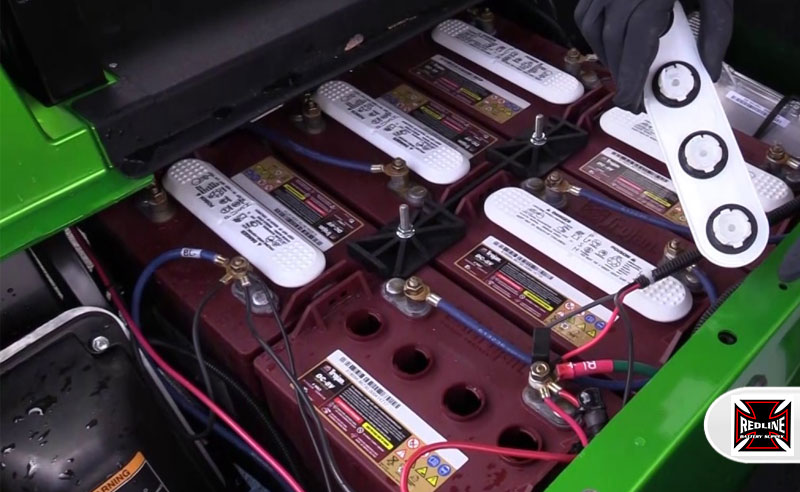
Overview:
Proper storage of golf cart batteries during the off-season is crucial to maintain their longevity and performance. Golf cart batteries are typically lead-acid or lithium-ion, each requiring different care. Here's a comprehensive guide on how to store them properly.
1. Clean the Batteries
Before storing, clean the batteries thoroughly to remove dirt, corrosion, or debris. Use a solution of baking soda and water to clean the terminals and neutralize any acid residue. For lead-acid batteries, this helps prevent corrosion during storage. Ensure the batteries are completely dry before moving to the next step.
2. Check and Top Off Fluids (Lead-Acid Batteries)
If your golf cart uses lead-acid batteries, check the electrolyte levels in each cell. If levels are low, top them off with distilled water. It's crucial not to overfill, as the electrolyte can expand during charging.
3. Fully Charge the Batteries
Ensure your batteries are fully charged before storing them. A fully charged battery is less likely to freeze in cold temperatures and will hold its charge better over time. For lead-acid batteries, keep them connected to a charger that can maintain a float charge or has a trickle charge function to prevent self-discharge. Lithium-ion batteries should be charged to around 50-80% capacity; they do not require a constant charge during storage.
4. Disconnect or Remove the Batteries
Disconnect batteries from the golf cart to prevent any electrical discharge. For more extended storage, removing the batteries entirely from the cart might be advisable, especially if the cart is stored outdoors or in a location with extreme temperatures. Label the connections to ensure proper reconnection later.
5. Store in a Cool, Dry Place
Extreme temperatures can damage batteries. A temperature range between 50°F and 80°F (10°C to 27°C) is ideal. Lead-acid batteries are more prone to freezing, so avoid storing them in locations where the temperature can drop below freezing. Lithium-ion batteries are more tolerant of temperature variations but still should not be exposed to extremes.
6. Monitor Battery Charge Regularly
During the off-season, check the battery charge every 4-6 weeks. Lead-acid batteries tend to lose charge over time and may need to be recharged periodically to prevent sulfation, which can reduce capacity.
7. Reinstall and Recharge Before Use
When it’s time to bring your golf cart out of storage, reinstall the batteries if they were removed. Before using the cart, fully recharge the batteries to ensure they are at optimal performance levels. Check for any signs of damage, corrosion, or leakage, especially in lead-acid batteries, before reconnecting.
8. Safety Precautions
Always handle batteries with care. Wear protective gear, including gloves and safety glasses, to prevent injury from battery acid or electric shock. Ensure the storage area is free of flammable materials, and never store batteries in a sealed container where gas buildup could occur.
Conclusion
Properly storing your golf cart batteries during the off-season can significantly extend their lifespan and ensure your cart is ready to go when you need it.
More News